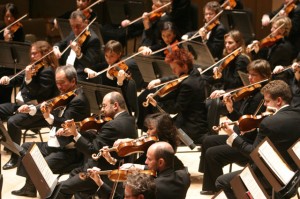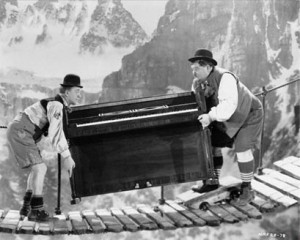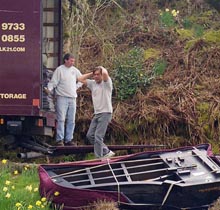Cleaning is never fun and easy but, it is something that must be done from time to time.
What we use in the store is a polish that is designed specifically for the high polish pianos. Although the easiest and simplest way to do the cleaning is by using a very soft and lintless cloth like a cheesecloth or old soft T-shirt works wonders. I say to dampen the cloth a little but only to the smallest extent and my adage is to wash your hands, rinse the soap off well and then dry them on the cloth that you are going to use to dust. In other words very lightly damp.

If your piano has a wood grain or a satin finish then do the same thing except be sure to wipe with the grain of the wood. NEVER EVER use furniture polish to clean your piano. It is not good for the piano and it will take a long time to get the residue off.
Use the same technique when wiping off your keys. DO NOT use polish or cleaner of any kind EVER to clean your keys. If they are ivory this is not good at all because in many cases it will cause the ivory to absorb the polish and the keys will simply come off.

Here’s the tricky part. If you have a grand piano dust will inevitably get onto the soundboard of the piano (that piece of wood that is under the big metal plate) and if you are like me at all this will make you insane. Please do not attempt to clean that yourself. Call a certified technician which you can find at www.PTG.org and tell them you need to clean your soundboard and have your piano tuned. Paul McCloud at Accutone Piano Tuning www.pianoservsd.com is the guy we use here at PianoSD.com in Mission Valley in San Diego, California.
If you live in a particular humid area of San Diego for example like Carlsbad or La Jolla, you will notice that the dust will “stick” to the soundboard a little more than if you live in a drier climate like Rancho Santa Fe or San Marcos. In the cases that the climate is a little drier you will notice that the dust gets in quicker but is a little easier removed. However, in either case please call a certified tech to come out to do the work at his next tuning, but, let him know when you set your appointment that your piano needs a thourough cleaning that way he is prepared.
If you need some polish that is designed specifically for the piano you can find it here at PianoSD.com.
Drop by and say hello sometime we would love to meet you.
Ric Overton










 Upright pianos are generally the easiest to move. If the piano is going upstairs Precision would simply bring the necessary tools and equipment to do this. Of course, some “upright” pianos are 36″ tall while others may be up to 52″. This is important information for your movers to know BEFORE they arrive to move your piano. If the legs are decorative, they are wrapped up and blankets are put around the piano for safe keeping and then the piano is placed on a four wheel dolly and taken to the truck for transportation to its destination.
Upright pianos are generally the easiest to move. If the piano is going upstairs Precision would simply bring the necessary tools and equipment to do this. Of course, some “upright” pianos are 36″ tall while others may be up to 52″. This is important information for your movers to know BEFORE they arrive to move your piano. If the legs are decorative, they are wrapped up and blankets are put around the piano for safe keeping and then the piano is placed on a four wheel dolly and taken to the truck for transportation to its destination.







